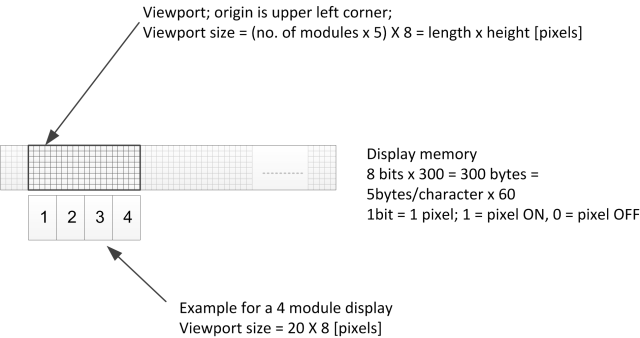A display is made up of 1 to up to 16 eBrick modules stacked together. The visible area (LED area) is called viewport and it shows a part of the display memory.
In the example above there are 4 modules connected into a display. The display memory is always 300 bytes, regardless of how many modules are connected. It can store up to 60 characters, as each character is 5×8 pixels.
Each module has its own copy of the complete display memory. Normally all copies (i.e. all modules) have the same data in, but this is not mandatory.
Each module has its own unique address, self configured at power on or reset. The addresses start with 1 (leftmost module) and continue up to the number of connected modules. In the example above, addresses are 1..4.
Based on its own address, each module “knows” where it sits in the viewport and what data must show (from the complete display memory).
The viewport can “travel” across the display memory, as well as outside of its borders. All LEDs “falling” outside of the memory display borders are OFF.
This I believe is a new approach, which gives the complete flexibility to the final application.


